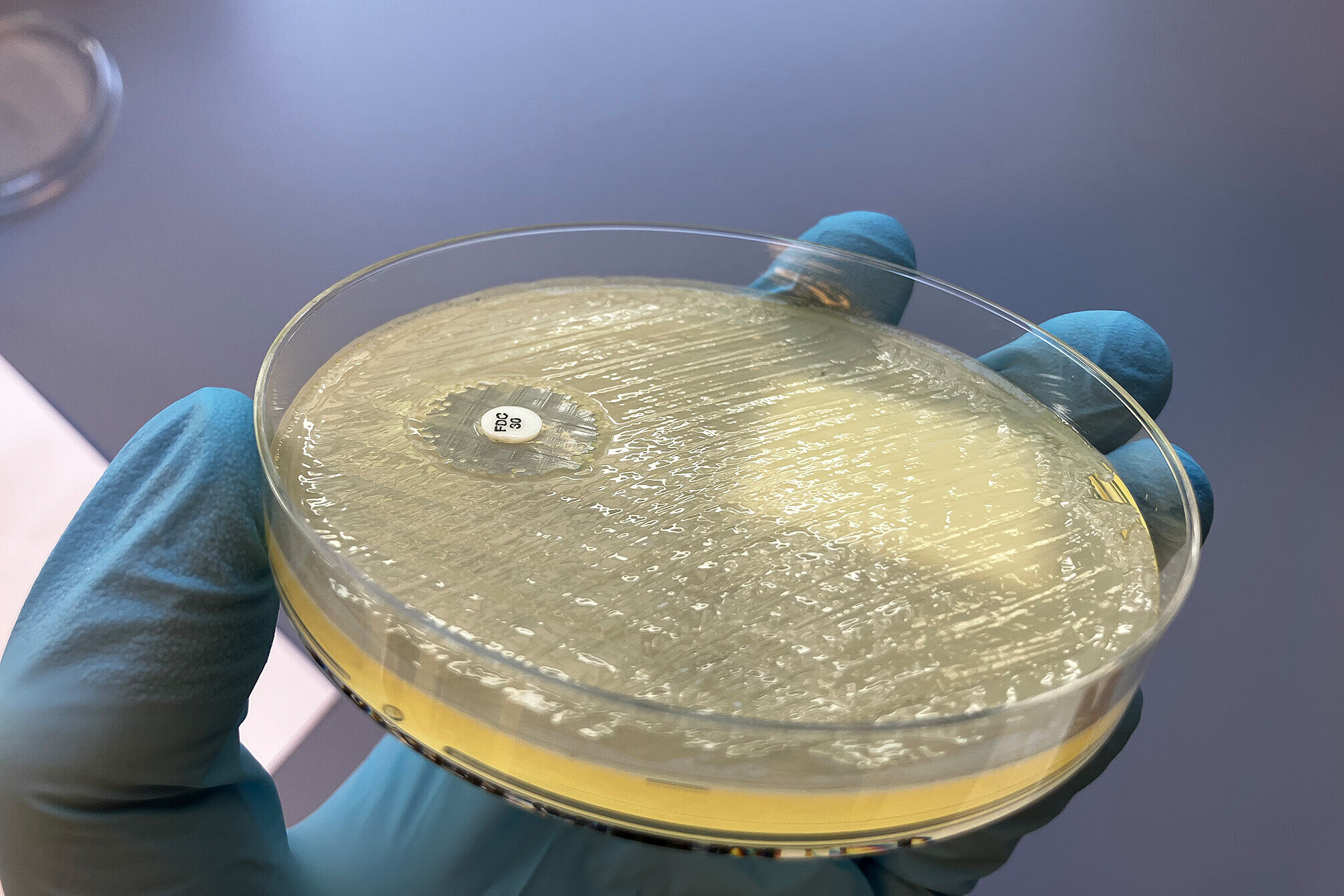Researchers from the Helmholtz Institute for One Health (HIOH), the University Medicine of Greifswald, the Friedrich-Loeffler-Institut (FLI) and the University of Greifswald were involved in the project. The HIOH is a site of the Helmholtz Centre for Infection Research (HZI) in cooperation with the aforementioned institutions. Over the course of a year, the research team took more than 120 water samples at various locations in Greifswald and the surrounding area, including a beach used for swimming, a site near to a sewage treatment works, and a protected area on the Island of Riems. The aim was to analyse the occurrence of multidrug-resistant bacteria and to determine the concentration of antibiotic residues in the surface water.
“Our results show that some of the isolated bacteria are high-risk strains with significant resistance to important antibiotics,” explains Prof. Katharina Schaufler, co-leader of the study, head of the department Epidemiology and Ecology of Antimicrobial Resistance at HIOH and professor at the University Medicine of Greifswald. The samples taken near the sewage treatment plants, in particular, show higher concentrations of multidrug-resistant pathogens and antibiotic residues. Resistant pathogens were also isolated in the waters around Greifswald Bay, but in much lower concentrations.
Schaufler underlines that healthy swimmers with normal immune systems are not subject to an increased risk of infection through multidrug-resistant bacteria in the investigated waters – “our study serves to elucidate the status quo and is not intended to stoke fears.”
However, the study shows how difficult it is for sewage treatment plants to remove multidrug-resistant bacteria and drug residues completely from water. “It would be worthwhile to further optimize sewage treatment processes to minimize the risk of multidrug-resistant bacteria and antibiotic residues,” says Schaufler. At the same time, the use of antibiotics and antimicrobial drugs in medicine and agriculture should be more strictly regulated. After all, human influence plays a major role in the spread of multidrug-resistant pathogens.
“The project illustrates the close relationship between humans and animals in a shared environment,” says Prof. Karlhans Endlich, Scientific Director of University Medicine. It is important to understand the underlying mechanisms and the transmission of infectious diseases – also outside of hospitals. “The results of the study, recently published in the scientific journal npj Clean Water, provide an important basis for the development of alternative strategies in the fight against multidrug-resistant bacteria, the cause of the so-called silent pandemic.”
Katharina Schaufler adds some topics that will follow on from the results of this study: “What does the situation look like in other countries along the Baltic Sea coast? Which role do waterfowl play in the spread of multidrug-resistant bacteria? And how can these results be used to develop preventive measures and alternative treatment approaches? These are all questions which will be approached in future research and could contribute towards the development of alternative strategies in the fight against multidrug-resistant bacteria.”




